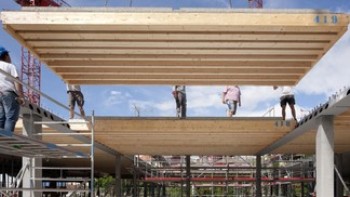Apr 2 2013
Facing the numerous challenges related to sustainability, many research works and experiments are conducted to develop innovative concepts, technologies and construction systems. In order to identify the key perspectives of this domain, the magazine Habitation publishes an article on the construction of the future, including an interview of Professor Emmanuel Rey of the Laboratory of Architecture and Sustainable Technologies (LAST).

Among the numerous innovations currently under development in the built environment, some tendencies can be emphasized and grouped according to four research axes, which meet the work in which the LAST is presently involved.
Symbiotic neighborhoods.
This third generation of sustainable neighborhoods will borrow principles from industrial ecology to further develop synergies and resource exchanges at the scale of a neighborhood.
Rebuild with flexibility.
Much more than imagining a new ideal city in the middle of the fields, it is necessary, especially in Europe, to determine the optimal way to upgrade existing towns and cities. A key issue will therefore be the renovation, transformation and replacement of existing buildings.
New energy paradigms.
The first efficiency measure always consists in decreasing the needs. This reality is going to make bioclimatic strategies essential, taking into account an increasing number of parameters: passive solar energy and natural light, natural ventilation and passive cooling, weighing the interests of urban densification and quality of life. Integrated design of renewable energy system will also play an increasing role in the next decades.
Recyclable housing.
These enhancements will help the growing, in energy balances, of the importance of grey energy. This will promote, in Switzerland, the use of local resources such as wood, but also to innovate in the field of hybrid construction systems, which combine several materials taking advantage of the characteristics of each. Another major axis is the recovery of construction materials. "Today's buildings are mines for those of tomorrow. We begin to think about improved dissociated building systems which can reduce construction wastes and anticipate their treatment at the time of deconstruction" explains Prof. Emmanuel Rey.